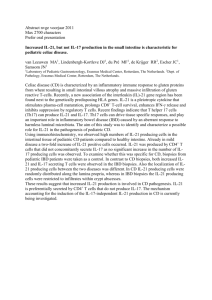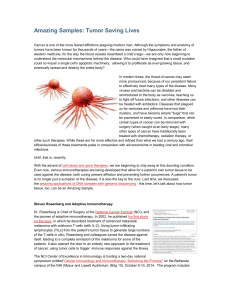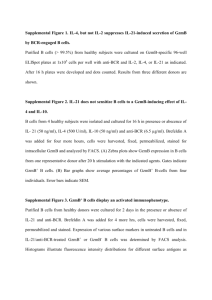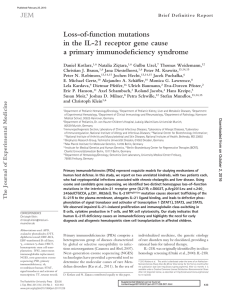Cancer immunotherapy by Interleukin
advertisement
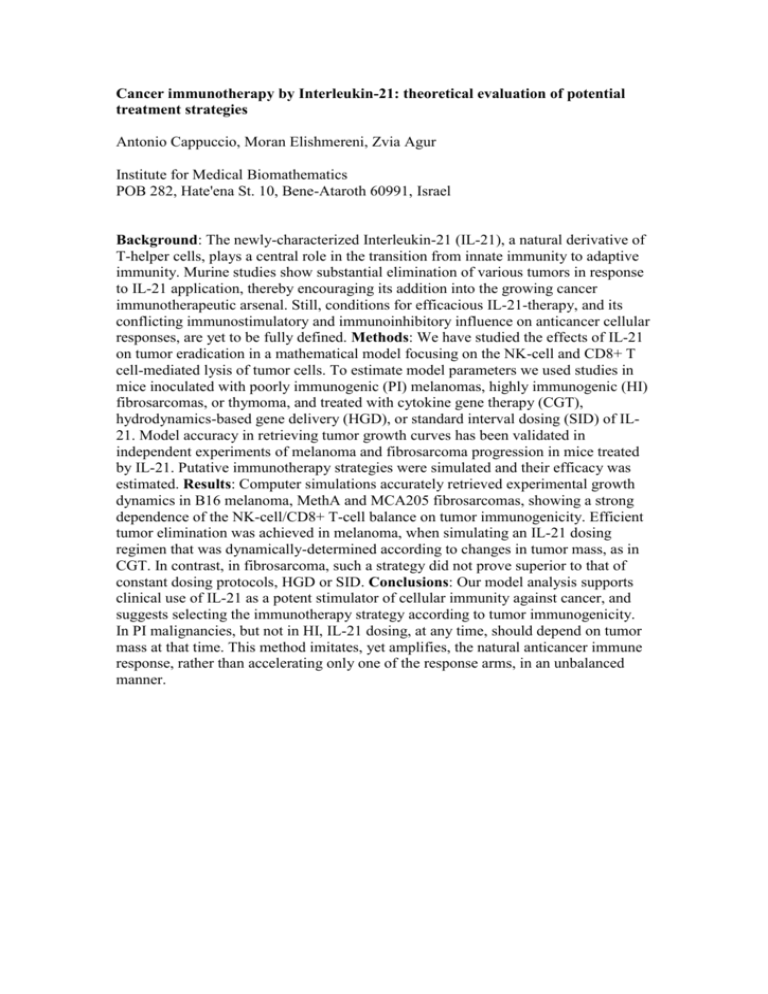
Cancer immunotherapy by Interleukin-21: theoretical evaluation of potential treatment strategies Antonio Cappuccio, Moran Elishmereni, Zvia Agur Institute for Medical Biomathematics POB 282, Hate'ena St. 10, Bene-Ataroth 60991, Israel Background: The newly-characterized Interleukin-21 (IL-21), a natural derivative of T-helper cells, plays a central role in the transition from innate immunity to adaptive immunity. Murine studies show substantial elimination of various tumors in response to IL-21 application, thereby encouraging its addition into the growing cancer immunotherapeutic arsenal. Still, conditions for efficacious IL-21-therapy, and its conflicting immunostimulatory and immunoinhibitory influence on anticancer cellular responses, are yet to be fully defined. Methods: We have studied the effects of IL-21 on tumor eradication in a mathematical model focusing on the NK-cell and CD8+ T cell-mediated lysis of tumor cells. To estimate model parameters we used studies in mice inoculated with poorly immunogenic (PI) melanomas, highly immunogenic (HI) fibrosarcomas, or thymoma, and treated with cytokine gene therapy (CGT), hydrodynamics-based gene delivery (HGD), or standard interval dosing (SID) of IL21. Model accuracy in retrieving tumor growth curves has been validated in independent experiments of melanoma and fibrosarcoma progression in mice treated by IL-21. Putative immunotherapy strategies were simulated and their efficacy was estimated. Results: Computer simulations accurately retrieved experimental growth dynamics in B16 melanoma, MethA and MCA205 fibrosarcomas, showing a strong dependence of the NK-cell/CD8+ T-cell balance on tumor immunogenicity. Efficient tumor elimination was achieved in melanoma, when simulating an IL-21 dosing regimen that was dynamically-determined according to changes in tumor mass, as in CGT. In contrast, in fibrosarcoma, such a strategy did not prove superior to that of constant dosing protocols, HGD or SID. Conclusions: Our model analysis supports clinical use of IL-21 as a potent stimulator of cellular immunity against cancer, and suggests selecting the immunotherapy strategy according to tumor immunogenicity. In PI malignancies, but not in HI, IL-21 dosing, at any time, should depend on tumor mass at that time. This method imitates, yet amplifies, the natural anticancer immune response, rather than accelerating only one of the response arms, in an unbalanced manner.



